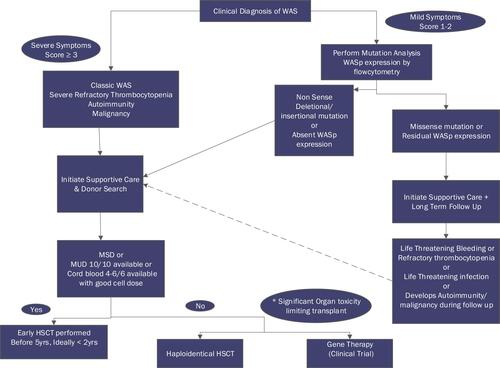Figures & data
Figure 1 Treatment decision algorithm for WAS/ XLT based on the severity of clinical symptoms, type of genetic mutation, and WASp expression. For patients with classic WAS with a suitable MSD/MUD donor or CB 5-6/6 or 4/6 with a good cell dose, an early transplant should be performed. In the absence of a suitable matched donor, a Haploidentical transplant or gene therapy trial should be discussed. XLT patients with severe thrombocytopenia or mutation suggestive of a severe phenotype and absent WASp expression should also be transplanted.

Table 1 Supportive Care in WAS
Table 2 Allogenic HSCT in WAS and Their Salient Features
Table 3 HSCT Vs Gene Therapy
